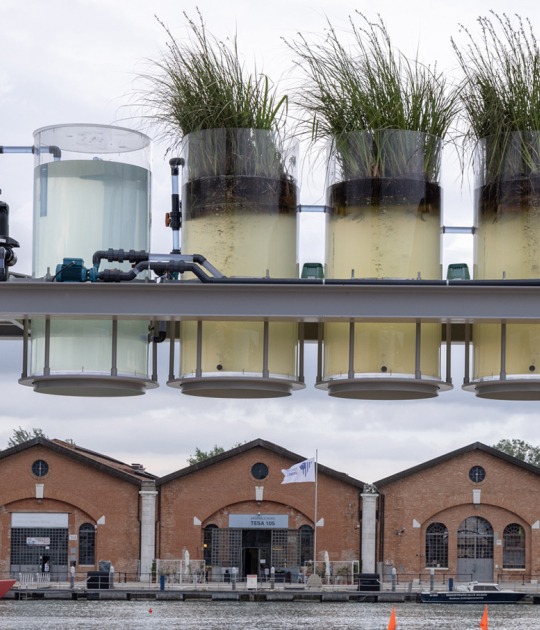Open House Madrid 2016 incorporates new names to its visits list, and among them it invites you to discover this hidden brutalist treasure by the architect Sánchez-Robles Tarín in the late '60s, clearly influenced by the great masters of modern architecture .
Between 1967 and 1970, the architect Cecilio Sánchez-Robles Tarín rised up an architectural church-convent-and-offices ensemble, which despite its striking presence in the Conde de Peñalver street in the neighborhood of Salamanca, nowadays is an undiscovered treasure.
The architect designed the ensemble clearly influenced by the style of Le Corbusier, and reminds projects such as the Palace of the Assembly of Chandigarh in India, whose construction was completed in 1962, just 5 years earlier.
But its uniqueness don't lie in its style, but in the way it solve the diverse uses that includes, differentiating volumes of great formal clarity, which get unified with the use of raw concrete in all elements.
The church gets framed by the vertical elements in facade, at the same time they differing the functions happening inside. The large curved concrete blade leans into the space of the church, welcoming the believers, from a grand scale facing the street to a human one inside, where the surprise occurs again after cross the section under the choir, with the large meeting space appearance.
The natural lighting treatment reinforces that inside's surprise, from the capital's usual warmly lit outside, to the almost dark entrance. In the large interior space we found a broken cover, allowing the subtle incoming of light into the cult space, in a more perpendicular way above the altar.
The convent is over the church, where the curve concrete blade in facade formula is repeated, although on a smaller scale and with a different purpose: to protect the rooms from the busy street's noise and activity. Through repetition of this formal strategy the unit set is achieved.
The facade of the office building - at the other side of the bell tower - is resolved based on brise-soleil, again a widely used resource by Le Corbusier for sun protection.
Between 1967 and 1970, the architect Cecilio Sánchez-Robles Tarín rised up an architectural church-convent-and-offices ensemble, which despite its striking presence in the Conde de Peñalver street in the neighborhood of Salamanca, nowadays is an undiscovered treasure.
The architect designed the ensemble clearly influenced by the style of Le Corbusier, and reminds projects such as the Palace of the Assembly of Chandigarh in India, whose construction was completed in 1962, just 5 years earlier.
But its uniqueness don't lie in its style, but in the way it solve the diverse uses that includes, differentiating volumes of great formal clarity, which get unified with the use of raw concrete in all elements.
The church gets framed by the vertical elements in facade, at the same time they differing the functions happening inside. The large curved concrete blade leans into the space of the church, welcoming the believers, from a grand scale facing the street to a human one inside, where the surprise occurs again after cross the section under the choir, with the large meeting space appearance.
The natural lighting treatment reinforces that inside's surprise, from the capital's usual warmly lit outside, to the almost dark entrance. In the large interior space we found a broken cover, allowing the subtle incoming of light into the cult space, in a more perpendicular way above the altar.
The convent is over the church, where the curve concrete blade in facade formula is repeated, although on a smaller scale and with a different purpose: to protect the rooms from the busy street's noise and activity. Through repetition of this formal strategy the unit set is achieved.
The facade of the office building - at the other side of the bell tower - is resolved based on brise-soleil, again a widely used resource by Le Corbusier for sun protection.
NUESTRA SEÑORA DEL ROSARIO DE FILIPINAS.
Where.- Calle del Conde de Peñalver, 40. Madrid (Spain).
When.- Monday and Tuesday, October 03rd and 04th, 2016, from 17:00 to 19:00h.
Inscription.- Without inscription




































![Friedrich Kiesler, Endless House for Mary Sisler [shattered sketch sheet], New York and Florida, 1961, 21.5 x 33.4 cm, pencil on paper, mounted on cardboard. Courtesy by the Austrian Frederick and Lillian Kiesler Private Foundation, Vienna Friedrich Kiesler, Endless House for Mary Sisler [shattered sketch sheet], New York and Florida, 1961, 21.5 x 33.4 cm, pencil on paper, mounted on cardboard. Courtesy by the Austrian Frederick and Lillian Kiesler Private Foundation, Vienna](/sites/default/files/styles/mopis_home_news_category_slider_desktop/public/2025-05/metalocus_Fundacio%CC%81n-Frederick-Kiesler_03_p.jpg?h=3b4e7bc7&itok=kogQISVW)













